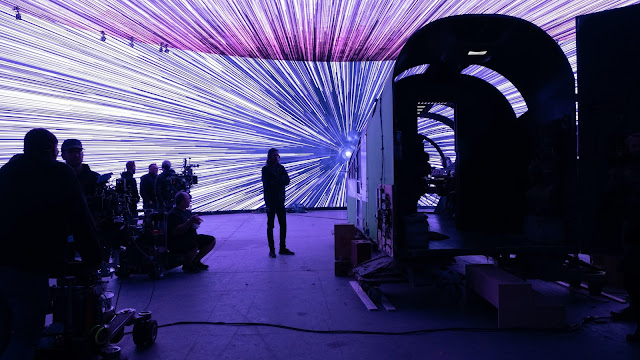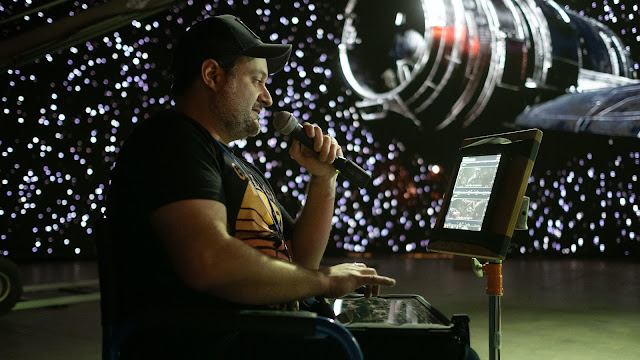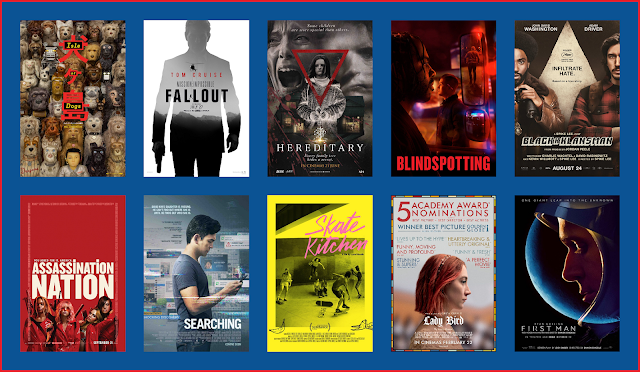Disney Gallery: The Mandalorian Review
(A version of this article originally appeared on kernelnow.com / mynewslike.com)
 |
| Pedro Pascal stars as the titular The Mandalorian - but not necessarily in its docuseries here (source: dtcimedia) |
If there’s one thing agreed upon about the endlessly-debated Star Wars: The Last Jedi, it’s that the accompanying documentary The Director and the Jedi on the film’s home release ranks among the all-time greatest makings-of. Rivalling legendary precursors such as Hearts of Darkness (Apocalypse Now) and Dangerous Days (Blade Runner) not just in length but in scope, the feature-length exposé followed the blockbuster production from project inception to release. Unsurprisingly, Disney would leap upon the success of the documentary and attempt to replicate it; the franchise’s very next film, The Rise of Skywalker, would have its own two-hour supplement in The Skywalker Legacy, and streaming service Disney+ has announced the upcoming Into The Unknown, a series examining the making of Frozen 2.
Sitting between these two in release is the less-catchily named Disney Gallery: The Mandalorian, an eight episode series that documents the creation of the first live-action series for both streamer and saga, The Mandalorian. Though it matches its parent show in series length the individual episodes of Gallery are not a one-for-one offering, with each instalment focusing on a different element of production as opposed to the content of a concurrent chapter.
 |
| (clockwise l-r) Chow, Dallas Howard, Favreau, Famuyiwa, Filoni, Waitit and Famuyiwa are well at ease together (source: dtcimedia) |
It’s a series that takes a while to find its feeting, with the first two episodes (or first hour/25% of the show, depending on how you look at it) coming in extremely uneven as they introduce – or more likely, re-familiarise – viewers to the Jon Favreau-led project. There are welcome moments in Directing, coming in the stories the show’s directors have to tell whether in brief career retrospectives for the lesser-known Rick Famuyiwa and Deborah Chow, or the welcome anecdotes that the more seasoned Taika Waititi and Bryce Dallas Howard have to offer (the latter has the only real connection to the iconic Akira Kurosawa, whose influence is impressed upon the viewer in every episode of this docuseries). The final director – Favreau’s second-in-command Dave Filoni – proves a mine of knowledge and unique experience, but we’ll get to him later.
The missteps of these two episodes mirror those of Disney Gallery’s debut season as a whole, chiefly within Legacy, an episode apparently desperate to justify its galactic worthiness which further contributes to the franchise’s deification. It’s an issue that also creeps into Directing, perhaps unavoidable when showcasing film-makers who are also committed fans, but so much time and energy has been spent on romanticising the Star Wars experience in “The Disney Era” that there’s nothing new to be said even by these fresh, diverse voices. Obviously, Favreau and co have no interest in furthering the fanboy toxicity that has plagued the saga, but such extended worship on all sides is what has led to the series’ downfall as a cultural icon and trendsetter. Like the constant quarrels over “what it means to be Star Wars”, the sentimental monologues here are too familiar and a little tedious.
 |
| In Cast,
performance artists Lateef Crowder (above), Brendan Wayne and Misty Rosas
rightfully get plentiful recognition for their role in the show (source: vulture.com) |
The series corrects its course almost immediately in Cast as the series’ most important stars get a chance to discuss The Mandalorian from an actor’s point of view, a rarity in most makings-of which usually focus on the visual treatment. Ex-fighter Gina Carano (Cara Dune) comes off as immensely likeable, but perhaps the biggest surprise is the wealth of filmic knowledge and wisdom that Carl Weathers (Greef Karga) proves himself to be. In hindsight, his storied career and long history of headline roles means this should probably come as less of a revelation, but as he hints at his understanding of the history of cinema to the deep respect of his fellow cast members, you’ll find yourself hoping that the former Apollo Creed will be allowed to fill the role of mentor when The Mandalorian returns for season two. It’s a real shame that his insights to this behind-the-scenes look are limited to mostly just this episode.
The next two episodes take a thorough look at the two real stars of The Mandalorian. One, of course, you may already know: The Child/Baby Yoda. It’s not as if the episode Practical is dedicated solely to the tiny puppet (referred to as “Baby” by Dallas Howard), but it is largely a love letter to the realisation of this heartbreakingly adorable creature – and so, much of your reaction to this episode will depend on the level of cynicism you hold for the character. Whilst there doesn’t seem to be too much in the way of innovation for those familiar with the work of puppeteers in Star Wars and beyond, it’s hard not to crack a smile at seeing their work come to life. Obviously all involved have a great deal of affection for their tiny co-star, but the warmest tale comes from the reaction of Werner Herzog who plays the villainous Client who sets off the hunt for the infant. Occasionally one of cinema’s most cantankerous voices, even this esteemed German auteur is powerless to resist the charms of one of Star Wars’s most instantly-merchandisable characters.
 |
| These are just some of the crew required to bring The Child to life (source: insider.com) |
The other real star of the show isn’t a character at all – in fact, the unknowing eye wouldn’t even know it’s there. There is recognition in this team – for showrunner Favreau in particular – that the real spirit of Star Wars and its creator George Lucas was to innovate, to drive the film industry forward. In creating the technology known as ‘The Volume’, the team behind The Mandalorian have done just that. To understand the mechanics of what is essentially a real-world realization of virtual reality, it’s better to watch the episode Technology than to have this writer stumble through explaining it; however, it’s clear that in this 75-foot marriage of green-screen and real-time video game technology, the future of visual effects film-making has arrived.
 |
| The show’s crew enveloped by hyperspace on the pioneering stage of ‘The Volume’ (source: dtcimedia) |
For all the IMAX releases and visionary directors that “new Star Wars” has brought to bear since 2015, arguably the most breath-taking images of this new age come in this episode, as franchise locations both recognisable and original blink into existence on the stage of ‘The Volume’ behind the cast and crew. This particular development is one that could easily fill its own feature-length documentary, being a phenomenon that has to be seen to be believed, and is the one episode of Disney Gallery that you should make every effort to watch. There will come a moral question of whether or not the technology will be made more widely available and if it should be allowed to replace real world location shoots, but for now it is that rare innovation which unquestionably earns the label “game-changing”.
The rest of the show’s production – elements like scriptwriting and storyboarding – are condensed into a less expansive examination in Process, another outing that could have been merged with an earlier episode. The same can be said of the series finale Connections, which does feel very much like an epilogue to the show even if it is a much more earnest dive into how The Mandalorian ties into the “legacy” of Star Wars. These last two episodes feel more like on-screen versions of a Star Wars Celebration panel, just like the episode sandwiched in between them, Score. Focussing on the work of off-beat composer Ludwig Göransson, it’s the shortest of the eight episodes which is curious when you consider that he was – Favreau, Filoni and cast aside – the show’s most omnipresent contributor. Regardless, Göransson is a delight to listen to, and there are some stunning montages that blend scenes from the finished visual product with footage of the accompanying score being recorded.
 |
| Fans of the documentary Star Warriors may see Connections as a heartwarming epilogue befitting the work of the incredible 501st Legion (source: dtcimedia) |
Easily the most quietly crucial figure in Disney Gallery: The Mandalorian is the aforementioned Dave Filoni. As Favreau’s right-hand man in both these roundtables and in the creation of the show, the former animator is a veteran of Star Wars not just because of his stewardship of The Clone Wars and Rebels, but because of his long-standing association as student – or, if you prefer, Padawan – of George Lucas. Fans of his animated shows have long championed his understanding of this beloved saga, particularly in light of the former’s stunning recent conclusion, but more than just being acutely aware of the duties of the franchise he proves himselfa true scholar of narrative. Present at every discussion throughout this series, Filoni is gifted yet humble, grateful yet driven, and is often tasked not just with anchoring the conversation but with delivering the closing monologue that brings each episode’s study to a conclusion, always doing so with deep respect and intelligence.
 |
| With his work on the show being both impressive and invaluable, it may come as a surprise to learn that The Mandalorian was Dave Filoni’s first time as a live-action director (source: dtcimedia) |
Where the documentaries mentioned above stood as standalone essays, this premiere season of Disney Gallery stands as more of an omnibus collection, and so probably best appeals to those already interested in the film-making process. With its subject matter interchanging from ground-breaking to mundane, such viewers might be better served jumping straight to the more important instalments which rescue the series; regardless, like the hero of its storytelling companion, they’re likely to pick up a bounty of knowledge along the way.




Comments
Post a Comment